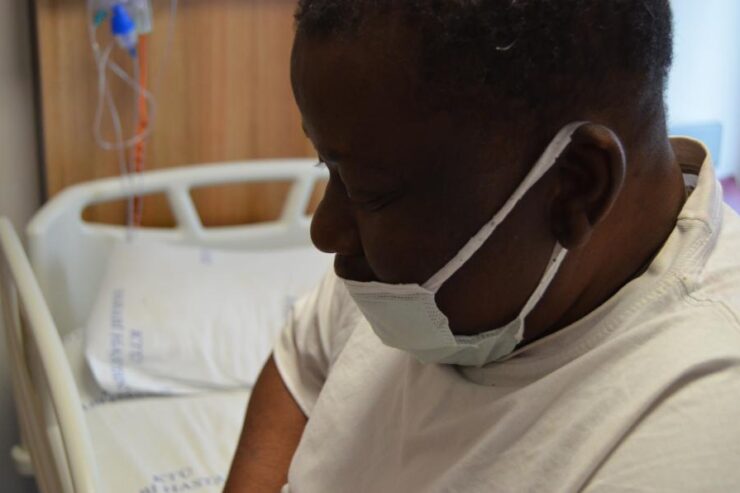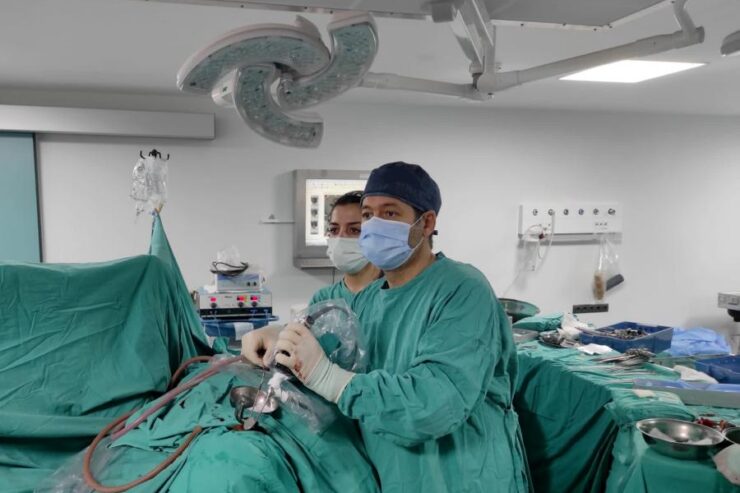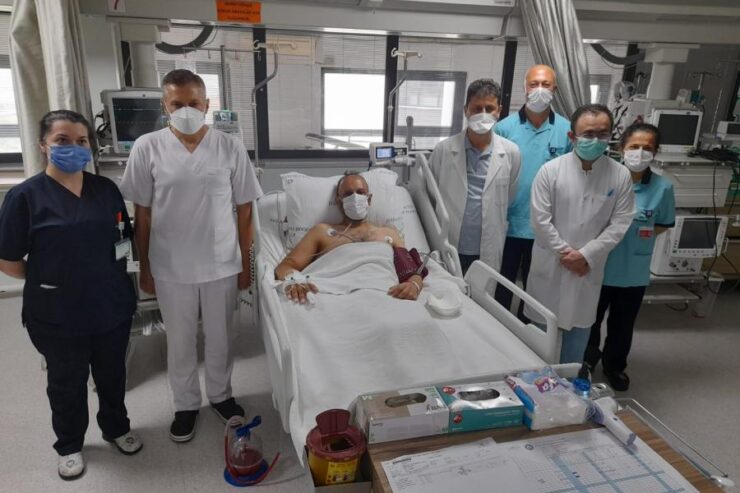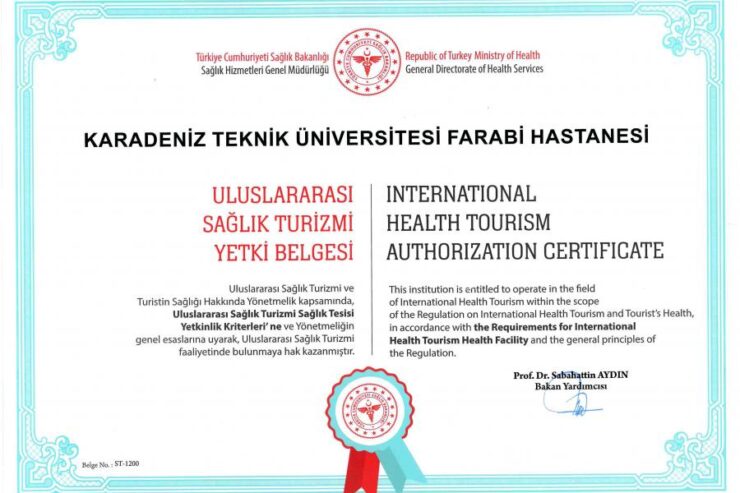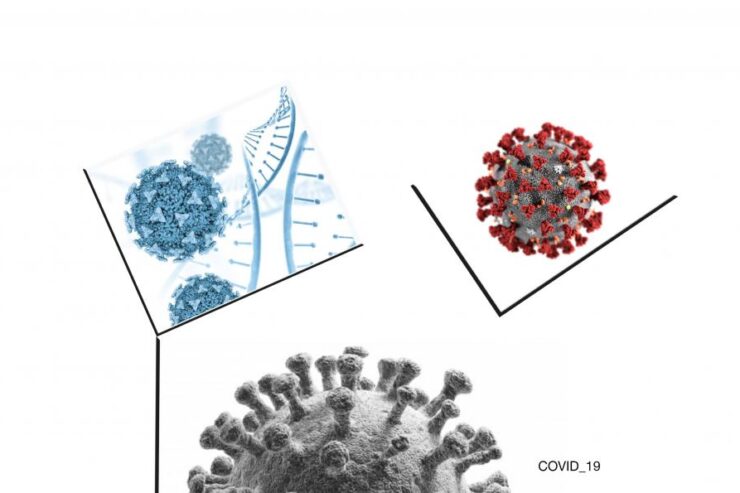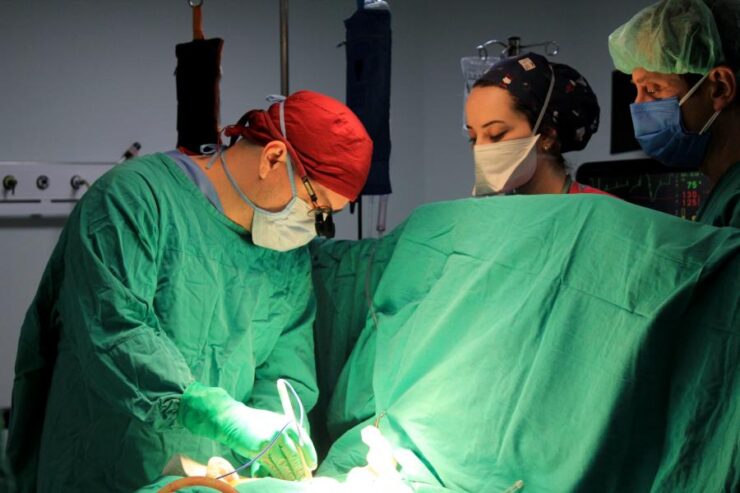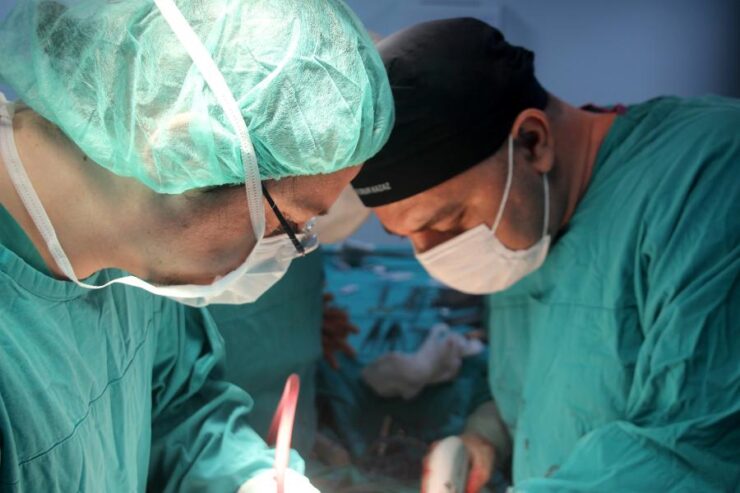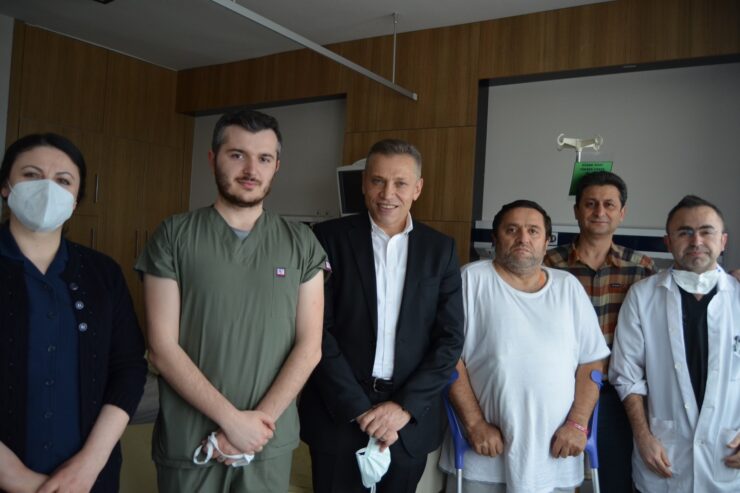
Arrived from Neighboring Country on Suspicion of Cancer, Patient Recovered and Left
[vc_row][vc_column][vc_column_text]Nugzar Tsilosani, 50 years old, living in Georgia, went to a health center in his country after coughing up blood from his mouth. In the computerized tomography taken here, it was said that the lower part of the left lung did not swell and showed signs of destruction and it could be Lung Cancer. The patient came to Turkey for treatment and applied to Farabi Hospital of our University. In the examinations performed by Prof. Dr. Celal TEKİNBAŞ and his team at Farabi Hospital. It was observed that the lower part of the left lung did not ventilate. Also an infection fluid empyema formed in the space between the ribs and the lung, and the meat structure, which we call parenchyma, was severely deteriorated. It was explained to the patient that this image could be seen not only in cancer but also in many other lung-related diseases, and the decision to operate was taken.
After the classical left posterolateral thoracotomy open surgery, the blood flow from the patient's mouth stopped with coughing and the shortness of breath improved. In the biopsy examination of the piece taken, it was understood that the patient did not have cancer, but that the structure of the lung trachea, called bronchiectasis, was severely deteriorated, and that it was a disease caused by the decay of the meat part of the lung where gas exchange takes place.
The patient, who was discharged, returned to his country with the happiness of both regaining his health and learning that he did not have cancer.[/vc_column_text][/vc_column][/vc_row][vc_row][vc_column][vc_gallery type="image_grid" images="5172,5173,5174,5175,5176"][/vc_column][/vc_row]


